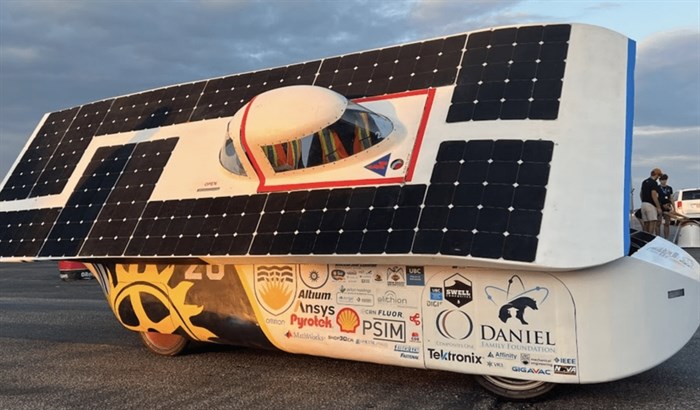UBCO student spearheads Okanagan's first solar-powered race car
This UBCO student is on a mission to engineer the Okanagan’s first solar-powered race car.
Clement Halim is a mechanical engineering and mechatronics student who has channelled his interest in electronics, robotics and automation into an exciting new project with his fellow students.
Halim created the Ogopogo Solar team, a student-led initiative to develop solar-powered race cars.
Universities across the world have been engineering and racing such cars since the first solar race in Australia in 1982.
These international competitions put student designs to the test in 2,000- to 3,000-kilometer endurance races.
“These solar cars are these wonderful innovative marvels of engineering,” Halim told iNFOnews.ca. “They also have a lot of potential. So, I think it's really important that we have these solar cars. It also helps to show the world where we actually are with technology, where we can push it.”
Although the Okanagan team is made up of university students, it is not affiliated with UBCO at this time.
This has caused some setbacks for the Kelowna-based team who are currently unable to work on university grounds. However, that hasn’t prevented them from getting the ball rolling.
Halim and 70 fellow students have a prototype battery in the works and are getting started on the “aeroshell”, or aerodynamic bodywork, of the vehicle.
Halim estimates that it will take around six years until the car is finished and many working on the project will have graduated long before its completion.
“The most important thing for anyone in this project is we're contributing to something that can guide the future and we're planning to make an impact,” Halim said. “So, unfortunately as I'm sad to say goodbye, I know I've played my part in hopefully making this a project for the future.”
Students at UBCO are currently working 10 to 20 hours a week on the design. Although this may seem like a lot, teams competing on the world stage are sometimes working between 40 and 80 hours, according to Halim.
The solar cars will typically cruise across a 2,000 to 3,000-kilometer distance at an average speed of 88 kilometres per hour, powered by just four square meters of solar panels and a five-kilowatt battery.
“For the most part that entire 3,000-kilometer trip you can only recharge once at the start and then the entire 3,000 is all sustained by the sun and whatever you have left in your battery,” Halim said.
At top speed, the vehicles can go at 140 kilometres per hour.
They are also road legal, but they are definitely not as comfortable as ordinary cars, with temperatures inside the car reaching close to 50 degrees.
Because of the Okanagan’s sunny summers and flat roads, Kelowna is an ideal location to build and drive a solar car, Halim said. Especially compared to rainy and cloudy Vancouver, where UBC has already developed a solar car.
However, it’s a pricey project and could cost at least $100,000 to build.
Halim ultimately hopes to see the Ogopogo Solar team compete in the American Solar Challenge, a 2,000 mile race across the United States.
To contact a reporter for this story, email Georgina Whitehouse or call 250-864-7494 or email the editor. You can also submit photos, videos or news tips to the newsroom and be entered to win a monthly prize draw.
We welcome your comments and opinions on our stories but play nice. We won't censor or delete comments unless they contain off-topic statements or links, unnecessary vulgarity, false facts, spam or obviously fake profiles. If you have any concerns about what you see in comments, email the editor in the link above. SUBSCRIBE to our awesome newsletter here.





